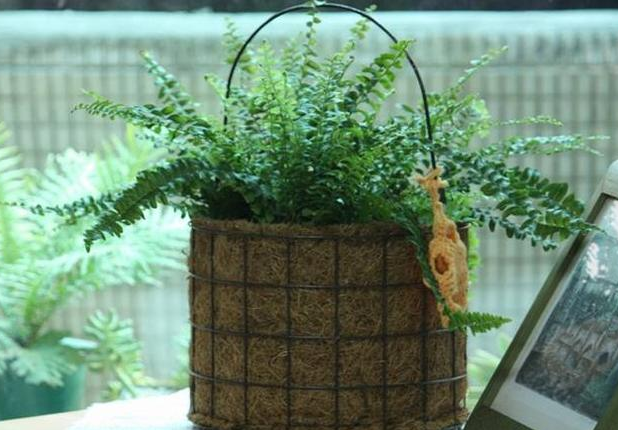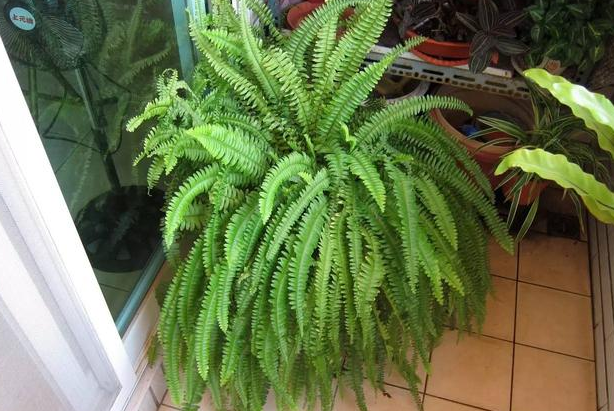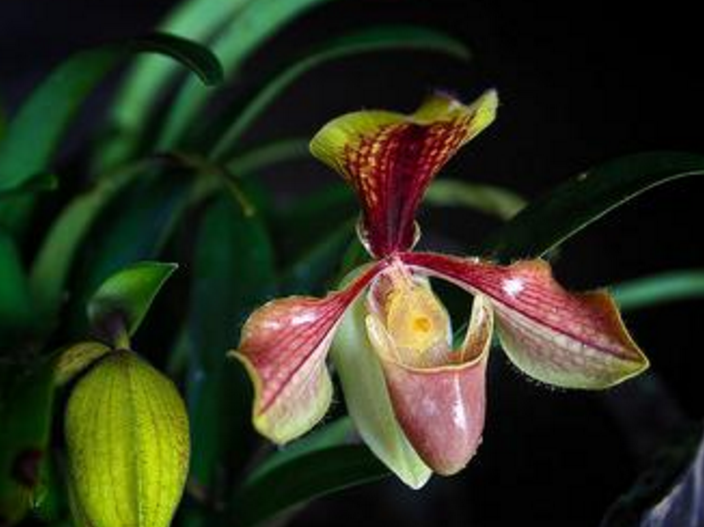How do ferns reproduce yellow leaves?
Pteridophytes, this is a lot of people like breeding, this pteridophyte is so good-looking, how do ferns reproduce? What about the yellow leaves of ferns:

How ferns reproduce:
I. introduction of split-plant propagation
Method 1: directly take the new root ball growing in the periphery of the root to propagate.
Method 2: use a sharp knife to cut the larger root ball to propagate.
Second, the choice of soil for raising seedlings:
Peat soil or general culture soil is recommended for soil propagation.
It is recommended to use cutting or seedling sponges for hydroponic propagation.
Third, how to propagate with a stem
Let the Boston kidney fern walk its stem and cut it off (ramet) before planting it when a new plant (seedling) grows.
What if the leaves of ferns turn yellow:
The leaves are dry brown or brittle (so-called browning), usually because the air is too dry with too much salt.
Avoid leaves near heat sources or power sockets, as drastic changes in temperature around Boston kidney fern plants can also cause browning.
If the leaves turn yellow or wither (non-browning) is usually caused by overwatering, you should immediately stop watering less, cut off the damaged leaves, and check the root system of the plant to see if it has rotted, and if the root system of the plant is mostly black, you should throw away the whole plant!
Pteridophytes are tropical plants, normal temperature water should be used when watering, and low water temperature should be avoided in winter.
This is the end of the introduction on the breeding methods of ferns and the treatment of yellowing leaves. Hurry up to raise a fern.
What is the reason why the leaves of indoor foliage ferns turn yellow?
Pteridophyte generally refers to the fern phylum. Pteridophyta (scientific name: Pteridophyta) is a large group of higher plants. At the same time, it is also a lower class of higher plants. Often a tall woody plant, it became a big forest, flourishing in the late Paleozoic era and mostly herbaceous in modern times. Ferns can be divided into five subphyla: Pteris subphylum, stone pine subphylum, leek subphylum, wedge leaf subphylum, true fern subphylum.
Too much sunlight, too little fertilizer or too dry air and too little watering can cause fern leaves to turn yellow. Ferns like bright spots, but they are not suitable for growing in the sun. During the peak growth period, balanced thin liquid fertilizer was applied every 4 weeks. Some ferns, such as Boston fern, Nestle fern and iron fern, need high humidity to grow well. What about the yellow leaves and rotten roots of ferns?
The causes of yellow leaves and rotten roots of ferns
Lack of oxygen
The excessive content of water or nutrient solution in the basin soil will lead to the lack of oxygen in the roots and fester.
Strong light irradiation
Ferns like shade, and if they are often exposed to direct sunlight or strong light during their growth, it will cause the surrounding air to dry and the leaves to turn yellow.
Air drying
Ferns like to be moist, and if the basin soil is dry or the surrounding humidity is too low, the leaves will also be withered and yellow.
Improper nursing
Usually, if the care of ferns is not thoughtful, such as the diseased leaves are not cleaned up, more fallen leaves accumulate in the basin, resulting in the rest of the leaves can not absorb sufficient nutrients and turn yellow.
The method of solving the rotten root of yellow leaves of ferns
Increase humidity
Ferns are wetting plants. If you forget to water them often, they will cause the leaves to turn yellow and wilt. At this time, you can find a tray, which is filled with water, or you can put a few stones to improve the humidity.
Maintain temperature
Ferns are warm-loving plants at the same time, the temperature during the normal growth period should not be lower than 20 ℃, especially in winter, otherwise it will be frostbitten.
Moderate watering
Although ferns like moist soil, they must not be watered frequently, otherwise too much water will fill the soil gaps, causing the roots to absorb too much water and fester or die of lack of oxygen. First of all, we should choose the soil with good drainage, and then the watering time should be watered when the temperature is about 15 ℃, usually pay attention to keep the surrounding environment moist and basin soil moist.
Proper fertilization
Fertilizer should be applied once a month, not too frequently. The insufficient supply of fertilizer is also one of the reasons for the yellowing of leaves. You can choose the special fertilizer for ferns.
Clean up diseased leaves
When the leaves have withered or rotten leaves, do not lose confidence in this plant, just clean up the diseased or yellow leaves in time, and spray disinfectant and germicidal drugs to prevent infection of other leaves.
- Prev

Can the vigorous growth of Boston ferns be hydroponically cultivated?
Boston fern, this is a lot of people like, this Boston fern is still very good-looking, what is the way for Boston fern to grow exuberantly? Can Boston ferns be hydroponically cultivated: the way for Boston ferns to grow vigorously: light, bright indoor space, and avoid direct sunlight.
- Next

What is the price of the culture method of Paphiopedilum
Paphiopedilum is also called slipper orchid. Perennial herbs of Orchidaceae. Most of them are terrestrial species, and there are many hybrid varieties. It is one of the most popular cultivated orchids. Most of the warm variegated varieties of Aristolochia blossom in summer and autumn, so what is the breeding method of Aristolochia? What is the price of Paphiopedilum? Next, let's go and have a look.
Related
- Fuxing push coffee new agricultural production and marketing class: lack of small-scale processing plants
- Jujube rice field leisure farm deep ploughing Yilan for five years to create a space for organic food and play
- Nongyu Farm-A trial of organic papaya for brave women with advanced technology
- Four points for attention in the prevention and control of diseases and insect pests of edible fungi
- How to add nutrient solution to Edible Fungi
- Is there any good way to control edible fungus mites?
- Open Inoculation Technology of Edible Fungi
- Is there any clever way to use fertilizer for edible fungus in winter?
- What agents are used to kill the pathogens of edible fungi in the mushroom shed?
- Rapid drying of Edible Fungi

